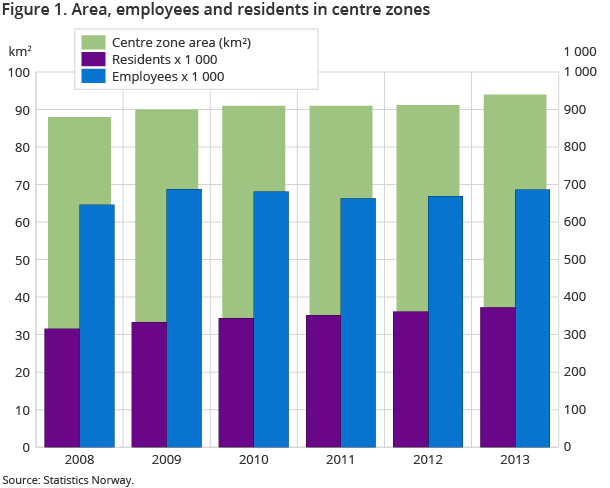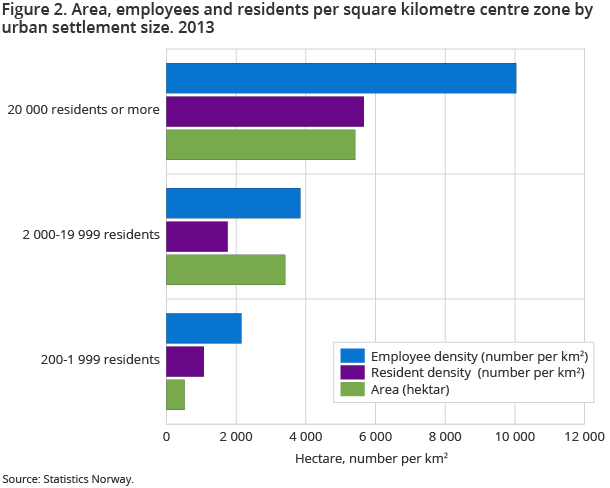Content
Published:
This is an archived release.
Weak increase in centre zone density
Both residents and the centre zone area have shown a weak increase in recent years. Overall, the density in the centre zones has increased slightly. The number of employees has, on the other hand, remained the same.
| 2013 | 2008 - 2013 | ||
|---|---|---|---|
| Area of centre zones (km²) | Residents per square kilometre | Residents per square kilometre | |
| The whole country | 93.8 | 3 971 | 11 |
| Urban settlements with 200 - 1 999 residents | 5.3 | 1 076 | 14 |
| Urban settlements with 2 000 - 19 999 residents | 34.1 | 1 755 | 13 |
| Urban settlements with at least 20 000 residents | 54.2 | 5 664 | 8 |


People are increasingly choosing to live in urban areas. There is also a political goal to utilise the urban areas as well as possible in order to ease the pressure on the surrounding land whilst also minimising the need for transport.
The number of employees has increased slightly from 2008 to 2013. Centre zones have around twice as many employees as residents.
There are around 4 000 residents per km 2 in centre zones, which is the same as in 2012. Over the last 5-year period, the increase in resident density has been 11 per cent, while the change in density of employees is almost zero.
Over the last five years, the number of inhabitants in Norway has increased by almost 7 per cent. At the same time, there has been an increase of 18 per cent in centre zones.
High density of residents is an indicator of effective land use utilisation as well as less energy-intensive transportation. High density of residents can, on the other hand, indicate poor dwelling conditions, scarcity and pressure on green areas.
The density in centre zones is higher in bigger urban settlements compared with the smaller urban settlements. There are more employees than residents per square kilometre in all size groups. The largest towns and cities have almost 5 times as many employees and residents per km 2 compared to small urban settlements. Only the biggest urban settlements have had growth in area, residents and employees over the last five years. The density of residents has increased in all size groups.
The different groups of urban settlements by size do not necessarily include the same urban settlements over time. Urban settlement growth can lead to a shift towards the upper group sizes, while small settlements can fall below the definition criteria and be omitted.
Additional information
This statistics monitor the development in centre zones in relation to residents, employees and density. Based on automatic delimitation of the centre zones.
Contact
-
Erik Engelien
E-mail: erik.engelien@ssb.no
tel.: (+47) 91 12 55 45
-
Jørn Kristian Undelstvedt
E-mail: jorn.kristian.undelstvedt@ssb.no
tel.: (+47) 94 50 68 64
